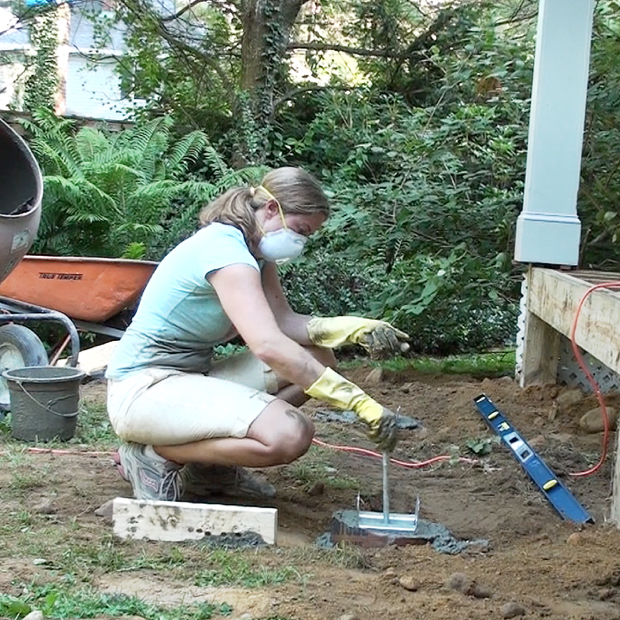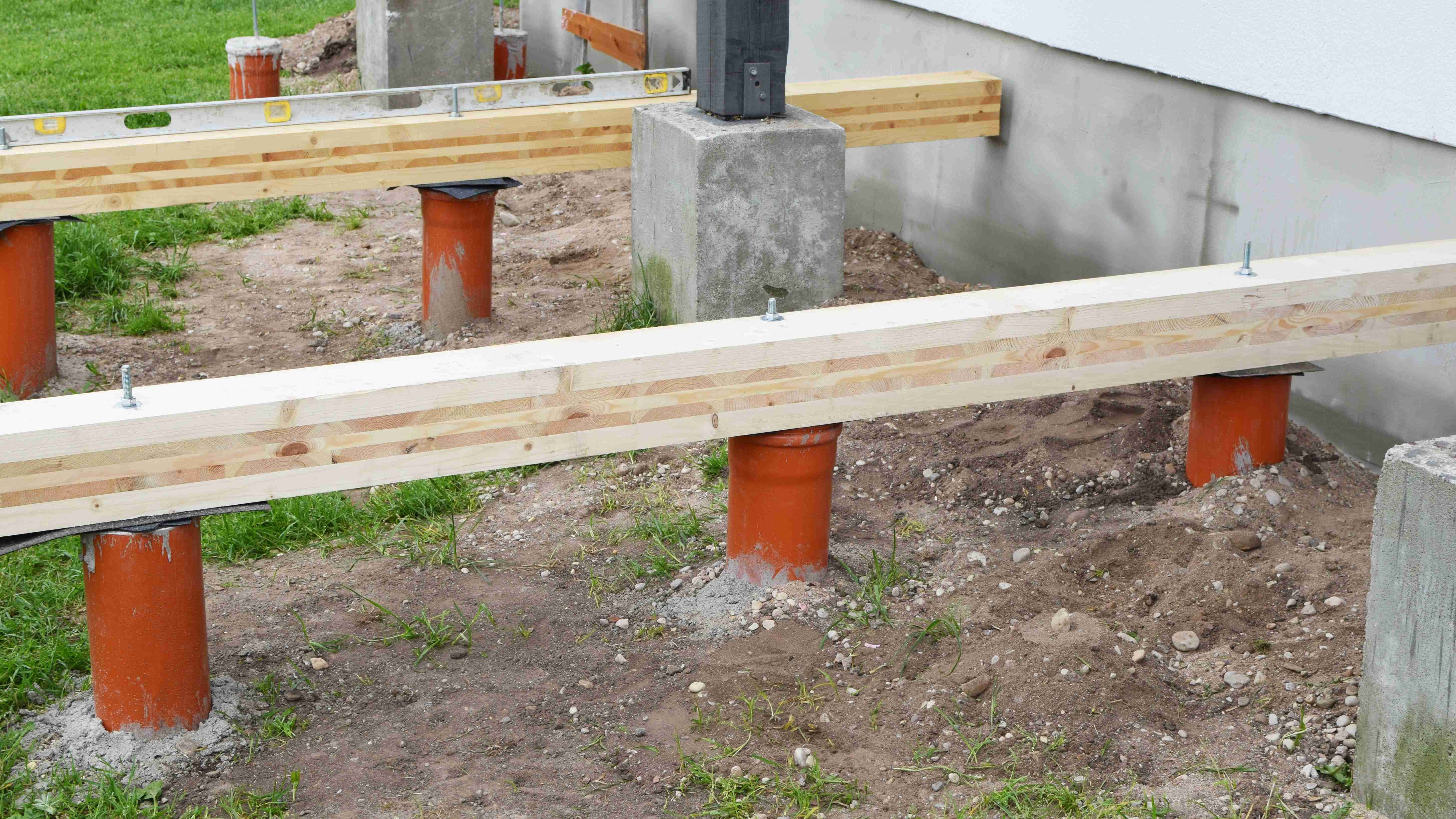A Solid Structure for Your Sanctuary: Exploring the Value of Deck Footings in Outdoor Frameworks
A Solid Structure for Your Sanctuary: Exploring the Value of Deck Footings in Outdoor Frameworks
Blog Article
Picking the Right Deck Footings for Security and Durability
The durability and security of your deck depend greatly on the kind of footings you pick, as they supply the vital support and security to withstand the test of time. In this discussion, we will discover the various kinds of deck footings, consider the essential variables to evaluate when making a choice, and dive into the pros and cons of various alternatives.
Kinds Of Deck Grounds
There are numerous types of deck footings that can be utilized, each offering special benefits and factors to consider. One common sort of footing is the concrete pier footing. These footings include a round opening loaded with concrete, which provides a solid foundation for the deck messages. Concrete pier grounds are reasonably very easy to install and provide exceptional security, making them a preferred choice for numerous deck jobs.
One more sort of footing is the helical heap ground. Helical heaps are steel shafts with helical plates connected to them. These footings are set up by screwing them into the ground, which creates a secure foundation for the deck. Helical heap grounds are excellent for locations with difficult dirt conditions, as they can be installed in almost any sort of soil. If required., they additionally permit for very easy change and leveling of the deck.
Alternatively, some contractors go with precast concrete grounds. These footings are constructed from long lasting concrete and be available in numerous forms and sizes to fit different deck layouts. Precast concrete footings are hassle-free to set up and provide a secure base for the deck structure.
Ultimately, one more alternative is the post-in-anchor footing system. This sort of footing entails driving a metal support into the ground and connecting it to the deck message. It supplies versatility in regards to positioning the deck blog posts and is appropriate for decks with light-weight frameworks.
When choosing the ideal kind of deck ground, it is vital to take into consideration elements such as dirt conditions, deck tons, and neighborhood building codes (Deck Footings). Consulting with an expert service provider or structural engineer can aid guarantee the ideal ground is chosen for a secure and stable deck
Elements to Think About When Choosing Grounds
When selecting the proper grounds for a deck, it is important to carefully think about various aspects such as soil problems, deck lots, and adherence to regional building codes. These aspects play a significant function in ensuring the stability and durability of the deck structure.
One of the key variables to consider is the soil conditions. The sort of soil on which the deck will be built figures out the kind of footings required. For example, decks improved loose or sandy dirts might call for much deeper grounds to give ample assistance and protect against settling. On the various other hand, decks constructed on clay or extensive dirts may require footings that can suit the dirt's propensity to broaden and contract.
An additional crucial element is the deck load. The weight of the deck, consisting of the products used and any possible online loads such as furnishings or events, should be taken into consideration when picking footings. The footings need to be created to bear the weight of the deck and disperse it uniformly to stop any kind of structural issues or failings.
Last but not least, adherence to regional building codes is extremely important. Building regulations vary from area to region, and it is important to abide by the details demands set by the neighborhood authorities. Deck Footings. These codes guarantee that the deck is constructed safely and meets the essential requirements for structural honesty and load-bearing ability
Concrete Footings: Disadvantages and pros

When made use of as the foundation for a deck,Concrete grounds supply several advantages and negative aspects. On the silver lining, concrete footings offer superb security and toughness. Concrete is a rigid and strong material that can support heavy tons and hold up against various climate condition. It likewise has a lengthy life-span, making it a dependable option for long-term usage.
An additional benefit of concrete grounds is their adaptability. They can be put right into different sizes and shapes to fit different deck styles and setups. Concrete footings can be customized to fit the specific needs and requirements of the deck framework.
Nonetheless, there visit site are additionally some downsides to making use of concrete grounds. One major downside is the price and labor involved in their installation. Concrete footings call for excavation and often require the aid of hefty machinery. This can increase the total price of the deck job and may call for specialist help.

Helical Piers Vs. Sonotubes: Which Is Better?
In taking into consideration the structure choices for a deck, the comparison between helical piers and sonotubes is essential in determining the superior selection. They are turned into the ground using hydraulic machinery, giving a resilient and stable structure for the deck.
When it involves stability and sturdiness, helical piers have the upper hand. The helical plates on the piers develop a solid hold with the soil, changing or stopping any activity of the deck. This is particularly useful in areas with unpredictable or moving soil problems. Sonotubes, on the other hand, count exclusively on the concrete filling for security, which may not offer the exact same level of toughness and resistance.
In regards to installation, helical piers are fairly simpler and faster to mount compared to sonotubes. The hydraulic machinery advice made use of to twist the piers into the ground makes certain a quick and reliable procedure. Sonotubes, on the various other hand, require excavating openings and pouring concrete, which can be labor-intensive and taxing.
Additionally, helical piers are a more functional alternative. They can be utilized in different soil conditions and can be changed or enhanced if needed. Sonotubes, on the other hand, might call for additional support, such as rebar, in specific soil problems or locations with high lots requirements.
Selecting the Right Footings for Your Deck's Dimensions
For ideal architectural honesty, it is important to very carefully pick the appropriate footings that align with the dimensions of your deck. The dimensions of your deck, including its size, elevation, and size, play a considerable duty in establishing the kind and dimension of grounds needed.
When choosing footings for your deck, it is essential to think about the load-bearing capability of the soil. The weight of the deck, integrated with the weight of any type of furniture or people on it, exerts a significant force on the footings (Deck Footings). It is vital to select footings that can properly sustain this weight without sinking or changing over time.
The shapes and size of the grounds must likewise be considered. Bigger decks with higher dimensions call for bigger footings to provide sufficient security and support. The shape of the grounds, whether they are square or round, relies on the style and layout of the deck. In addition, the deepness at which the footings are mounted must be moved here identified based on the frost line in your area to avoid any heaving or shifting as a result of freezing temperature levels.
Verdict
In conclusion, picking the appropriate deck footings is vital for ensuring stability and toughness. Factors such as the kind of grounds, the deck's measurements, and the pros and cons of various alternatives should be taken into consideration.
These footings are composed of a cylindrical opening filled with concrete, which supplies a solid foundation for the deck messages. Concrete pier grounds are relatively simple to install and offer outstanding security, making them a popular choice for numerous deck jobs.
Precast concrete footings are convenient to install and offer a stable base for the deck structure.
It offers flexibility in terms of positioning the deck posts and is ideal for decks with light-weight frameworks.
Concrete grounds provide a number of advantages and drawbacks when used as the foundation for a deck.
Report this page